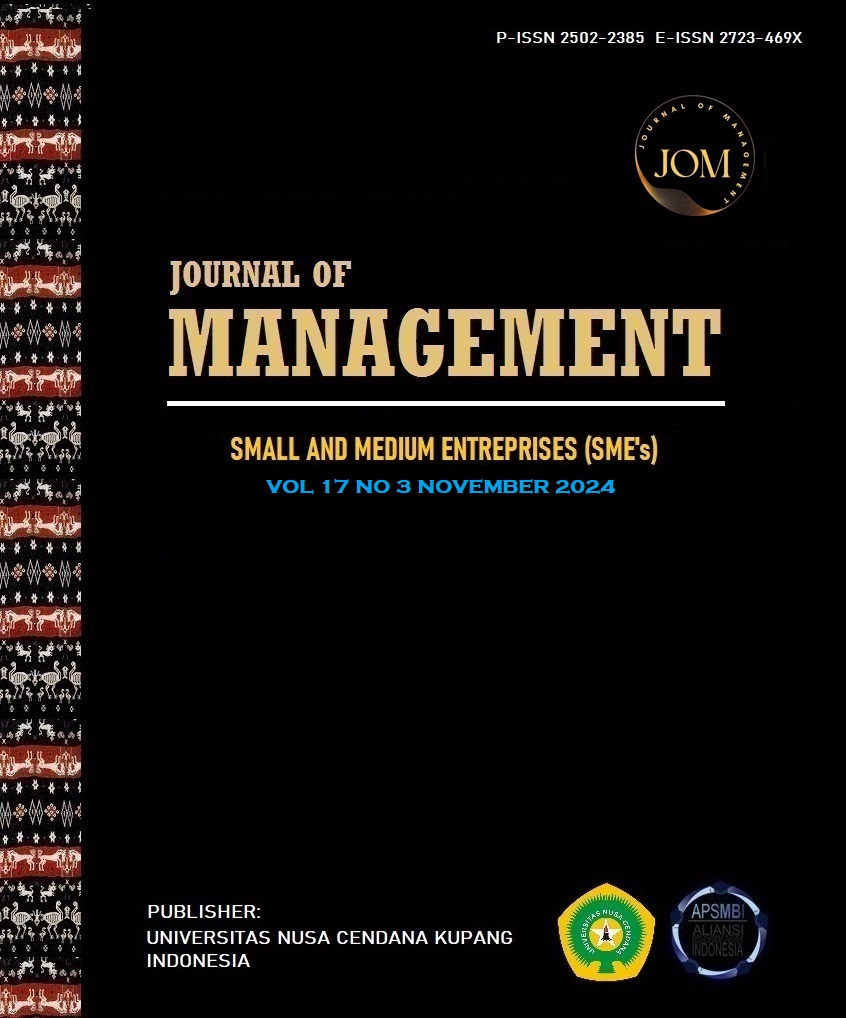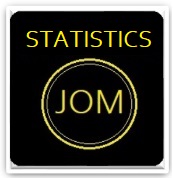POLICY TO SUPPORT THE FINANCING OF MICROENTREPRENEURS
Abstract
The objective of this article is to explain the determinants of access to credit in formal financial institutions for microenterprises by non-traditional factors, namely the possession of a mobile account without having an account in traditional financial institutions, the fact of being a member of a tontine or a mutual aid association. The methodology used is based on the estimation of the logit model with data from the Integrated Household Living Conditions Survey for 2019-2020 (EICVMB, 2019-2020) of the National Institute of Statistics of Burundi (INSBU). All other things being equal, the main results show that i) having a mobile banking account has a positive effect on access to credit (0.02751%), ii) even if the microentrepreneur does not have a traditional account (0.0322%), iii) and that being a member of a tontine or mutual aid association has a negative effect on access to credit (-0.02723%). For tontine groups to be a genuine source of finance for micro-businesses, especially those in rural areas, and thereby help to increase financial inclusion, these results call on the political authorities and financial service providers to work in synergy to develop the use of mobile banking in the provision of financial services, to develop appropriate support infrastructures, and to set up support modules for tontine groups, especially in rural areas.
Keywords: Mobile Banking; Tontine or Mutual Aid Association; Financing; Microenterprise; Burundi
Downloads
References
Alfred, S., et al. (2017). Mobile financial services and financial inclusion : Is it a boon for savings mobilization ? Journal of Advanced Research, 7(1), 29–35.
Asfour, H. K., & Haddad, S. I. (2014). The Impact of Mobile Banking on Enhancing Customers ’ E-Satisfaction : An Empirical Study on Commercial Banks in Jordan. International Business Research, 7(10), 145.
Asif, M., et al. (2023). Examining the Role of Self-Reliance , Social Domination , Perceived Surveillance , and Customer Support with Respect to the Adoption of Mobile Banking. 20, 1–19.
Banque de la République du Burundi. (2017). Rapport d’enquête sur l’offre des produits et services financiers formels au Burundi au 31 décembre 2016. Bujumbura/Burundi.
Benyacoub, B. (2021). Étude empirique sur les freins à l ’ inclusion financière des femmes au Maroc To cite this version : HAL Id : hal-03306210. International Journal of Accounting, Finance, Auditing, Management and Economics, 2(4), 323–336.
Bidiasse H. (2022). The determinants of the adoption of mobile money by small enterprises (SEs) in Douala, Cameroon. 15(3), 287–299.
CGAP. (2010). Microfinance and Mobile Banking: The Story So Far.
CGAP. (2019). The Future of G2P Payments: Expanding Customer Choice in Zambia.
Darmon, E., Chaix, L., & Torre, D. (2016). M-payment use and remittances in developing countries : a theoretical analysis. Revue d’économie Industrielle, (December 2018), 159–183.
Fall, F., et al (2020). Adoption and use of mobile banking by low-income individuals in Senegal. Review of Development Economics, 24(2), 569–588.
Fox, M., et al (2017). Les nouveaux modèles de mobile Banking en Afrique : un défi pour le système bancaire traditionnel ? Les nouveaux modèles de mobile Banking en Afrique : Un défi pour le système bancaire traditionnel ? Management & Prospective, 34(Volume 34), 337–360.
Frempong G. (2009). Mobile telephone opportunities : the case of micro- and small enterprises in Ghana. Emerald Insight, 11(2), 79–94.
Gujral, R. K. (2021). Digital finance and its impact on financial inclusion. International Journal of Advanced Research in Commerce, Management & Social Science, 04(01), 5–7.
Gupta, S., et al. (2017). Digital Revolutions in Public Finance. In International Monetary Fund.
Hussain, A. (2017). Financial Inclusion through Mobile Micro Banking : Building a Prototype for Transaction Cost Efficiency in Microfinance Practice. Global Disclosure of Economics and Business, 6(1), 19–28.
International Bank for Reconstruction and Development. (2018). Toward Universal Financial Inclusion in China: Models, Challenges, and Global Lessons.
Johnson, A. R., et al (2021). Group Borrowing : Microfinance-Tontine Sustainable Co-Existence . Case Of Cameroon. Journal of Economics, Finance and Management Studies, 4(11), 2345–2355.
Johri, A., et al. (2024). Digital financial inclusion in micro enterprises: understanding the determinants and impact on ease of doing business from World Bank survey. Humanities and Social Sciences Communications, 11(1), 1–10.
Klyton, A. et al (2020). Innovation resistance and mobile banking in rural Colombia. (October).
Konte, M., and Korku, G. (2023). Mobile money , traditional financial services and firm productivity in Africa. Small Business Economics, 60(2), 745–769.
Koomson I. et al (2023). Mobile money and entrepreneurship in East Africa: the mediating roles of digital savings and access to digital credit. Information Technology & People, 36(3), 996–1019.
Luo, Y. et al (2021). Digital financial capability and entrepreneurial performance. International Review of Economics and Finance, 76(July 2020), 55–74.
Mahesh K. et al (2023). Impact of Digital Financial Inclusion ( DFI ) Initiatives on the Self-Help Group : For Sustainable Development. International Journal of Management, Technology, and Social Sciences, 8(4), 20–39.
Malaquias, R. and Silva, A. F. (2020). Technology in Society Understanding the use of mobile banking in rural areas of Brazil. Technology in Society, 62(May), 101–260.
Meli S. D. et al (2022). Analysis of the socio-economic determinants of mobile money adoption and use in Cameroon. Telecommunications Policy, 46(9), 102412.
Neves, C., et al. (2023). Adoption and use of digital financial services : A meta analysis of barriers and facilitators. International Journal of Information Management Data Insights, 3(2), 100–201.
Parvin, S. and Panakaje, N. (2022). A Study on the Prospects and Challenges of Digital Financial Inclusion A Study on the Prospects and Challenges of Digital. International Journal of Case Studies in Business, IT, and Education, 6(2), 469–480.
Review, A. and Honor, B. (2021). determinants entre les villes de Douala et de Yaounde Adoption et usage du mobile money au cameroun : Analyse comparative des determinants entre les villes de Douala et de Yaounde. African Development Review, (February), 1–12.
Rozas S.T. and B. Gauthier. (2012). Les tontines favorisent-elles la performance des entreprises au Cameroun ? Revue d’économie Du Développement, 20(1), 5–39.
Shaikh, A. et al. (2023). Technological Forecasting & Social Change Mobile money as a driver of digital financial inclusion. Technological Forecasting & Social Change, 186(PB), 122-158.
Shen, Y., and Huang, Y. (2016). Introduction to the special issue : Internet finance in China. China Economic Journal, 9(3), 221–224.
Shen, Y., et al (2020). Using digital technology to improve financial inclusion in China. Applied Economics Letters, 27(1), 30–34.
Tater B. and John. K. (2023). Factors influencing adoption and customer satisfaction of m-banking apps in Inda. Dogo Rangsang Research Journal, 13(6), 7–23.
Thathsarani U.S. and Jianguo, W (2022). Do Digital Finance and the Technology Acceptance Model Strengthen Financial Inclusion and SME Performance ? Information, 13(390), 1–17.
Togba, E. L. (2012). Microfinance and households access to credit : Evidence from Côte d ’ Ivoire. Structural Change and Economic Dynamics, 23(4), 473–486.
Uzoma, A. B., et al (2020). Digital finance as a mechanism for extending the boundaries of financial inclusion in sub-Saharan Africa : A general methods of moments approach. Cogent Arts & Humanities, 7(1), 1–14.
Vienna Initiative. (2014). Credit Guarantee Schemes for SME lending in Central , Eastern and South-Eastern Europe A repo.
Weng, F., et al (2023). Impact of Internet Use on Farmers ’ Organic Fertilizer Investment : A New Perspective of Access to Credit. Agriculture, 13(219), 1–13.
Xie, P., et al (2016). The fundamentals of internet finance and its policy implications in China. China Economic Journal, 9(3), 240–252.

 Nsengiyumva Théogène(1*)
Nsengiyumva Théogène(1*)



